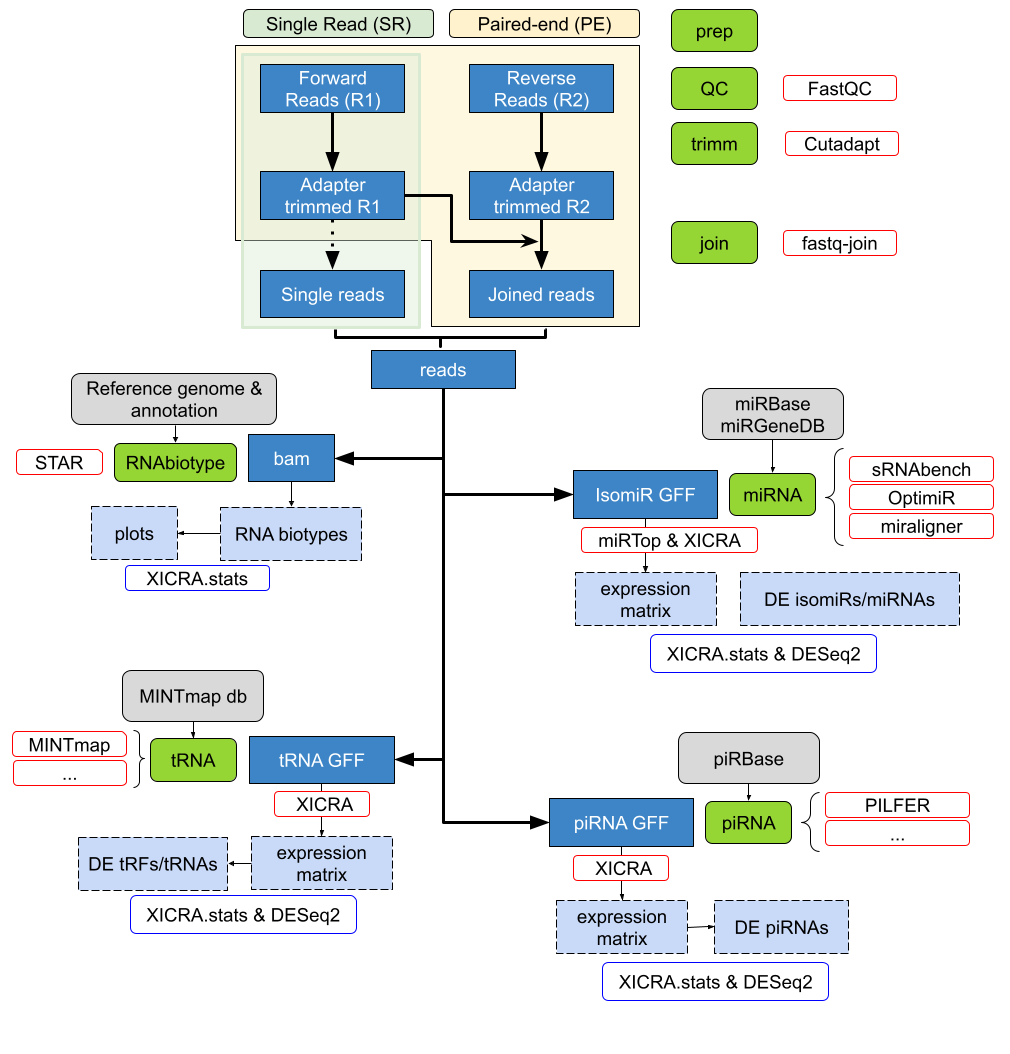XICRA Documentation¶
- Version
1.2.4
- Date
Dec 17, 2021
Introduction¶
XICRA is a pipeline that integrates multiple bioinformatic tools for the analysis of
paired-end or single end reads from small RNA-seq data. It describes all major RNA biotypes
present in the samples including miRNA and isomiRs, tRNA fragments (tRFs) and piwi associated
RNAs (piRNAs). Results are generated for each sample and summarized for all samples in a single
expression matrix.
The pipeline is written in Python with a modular architecture and based on open-source software and databases engines. The design of this bioinformatic tool allows miRNA analysis at different levels.
- Multiple tasks are performed by several modules including:
preparation of raw data
quality analysis and trimming of the adapters
merge reads (R1 & R2) that overlap
map reads to reference genome and annotation
quantification of RNA types
miRNA and isomiR quantification (including the variant type)
preparation of results for integrative visualization
The tool uses the miRTop database and its notation to quantify and report the miRNAs present in each sample. With the resulting matrix for each sample the analysis can be performed at the miRNA, isomiR, or variant type level.
The XICRA documentation includes:
A User’s Guide to get started.
An example Tutorial.
A list of Frequently Asked Questions (FAQs)
Some developer Guidelines to contribute to the project.
Additional information of the
XICRAproject.A list of Glossary terms.
A list of Bibliography
Pipeline Scheme¶
Here we show the scheme of the XICRA bioinformatic tool. It is divided in six main actions:
Preparation of the input data: preparation of the fastq files from a sequencing run.
Quality analysis: with quality check programs attending the input provided.
Adapters trimming: for each read the adapter sequences are filtered out.
Read joining: joins sequencing reads (paired-end).
Mapping reads and feature counts: generates a RNA biotype analysis, quantifying each RNA type present in the samples.
miRNA analysis: generates a miRNA analysis, with isomiR quantification and variant type information.
This information can be easily accessed using the accompanied R package XICRA.stats. Although the pipeline is designed to take paired-end reads, it also accepts single-end reads.
